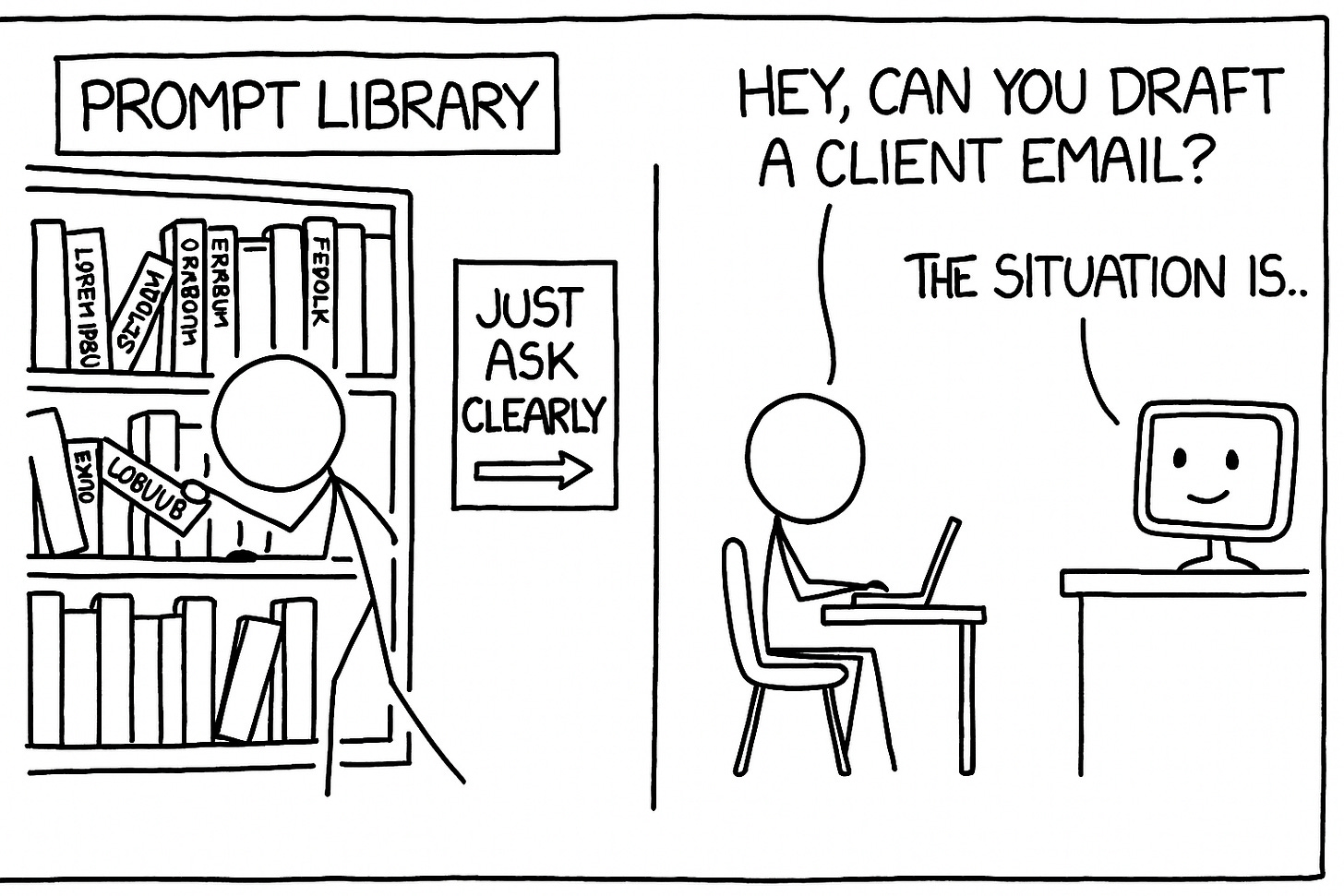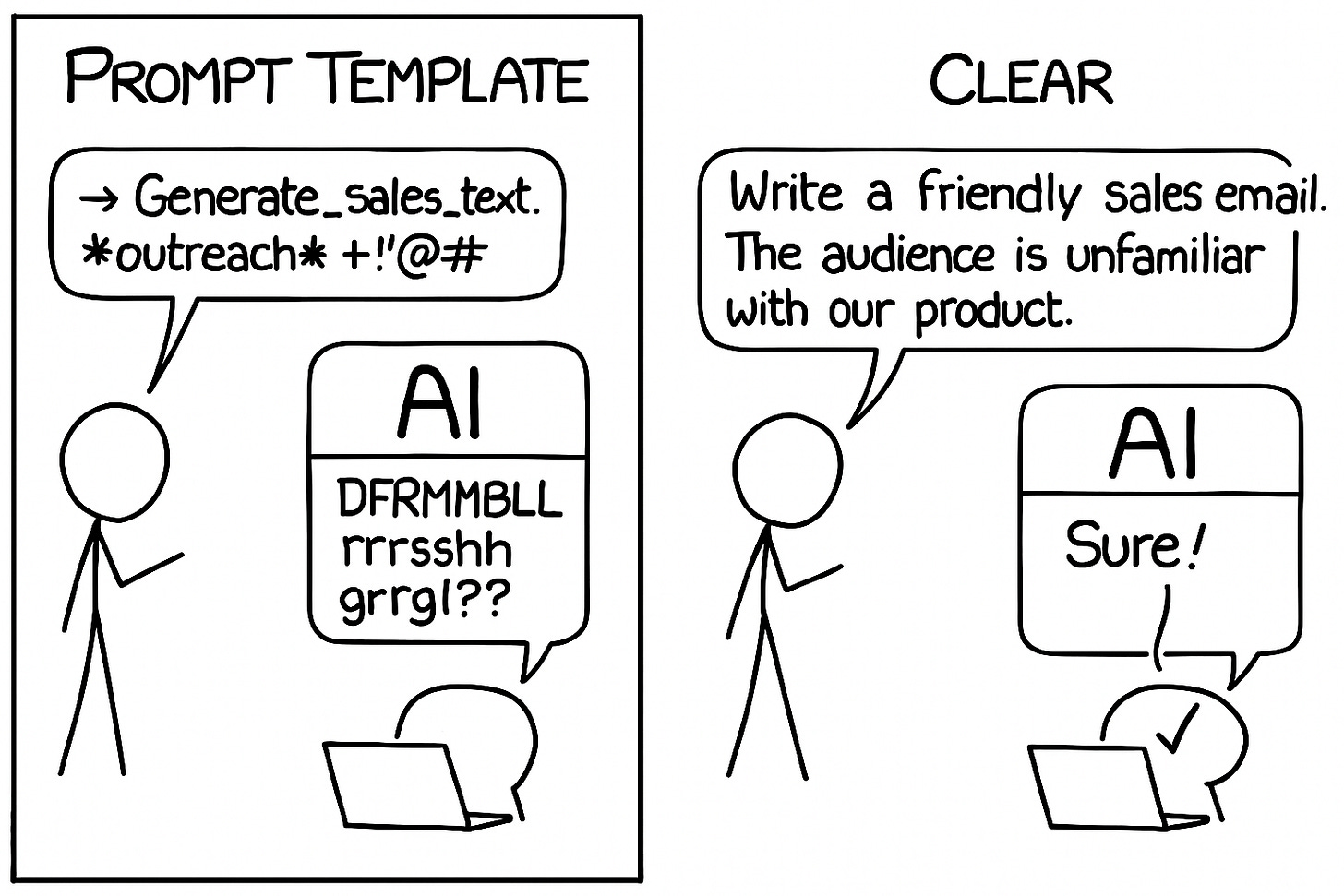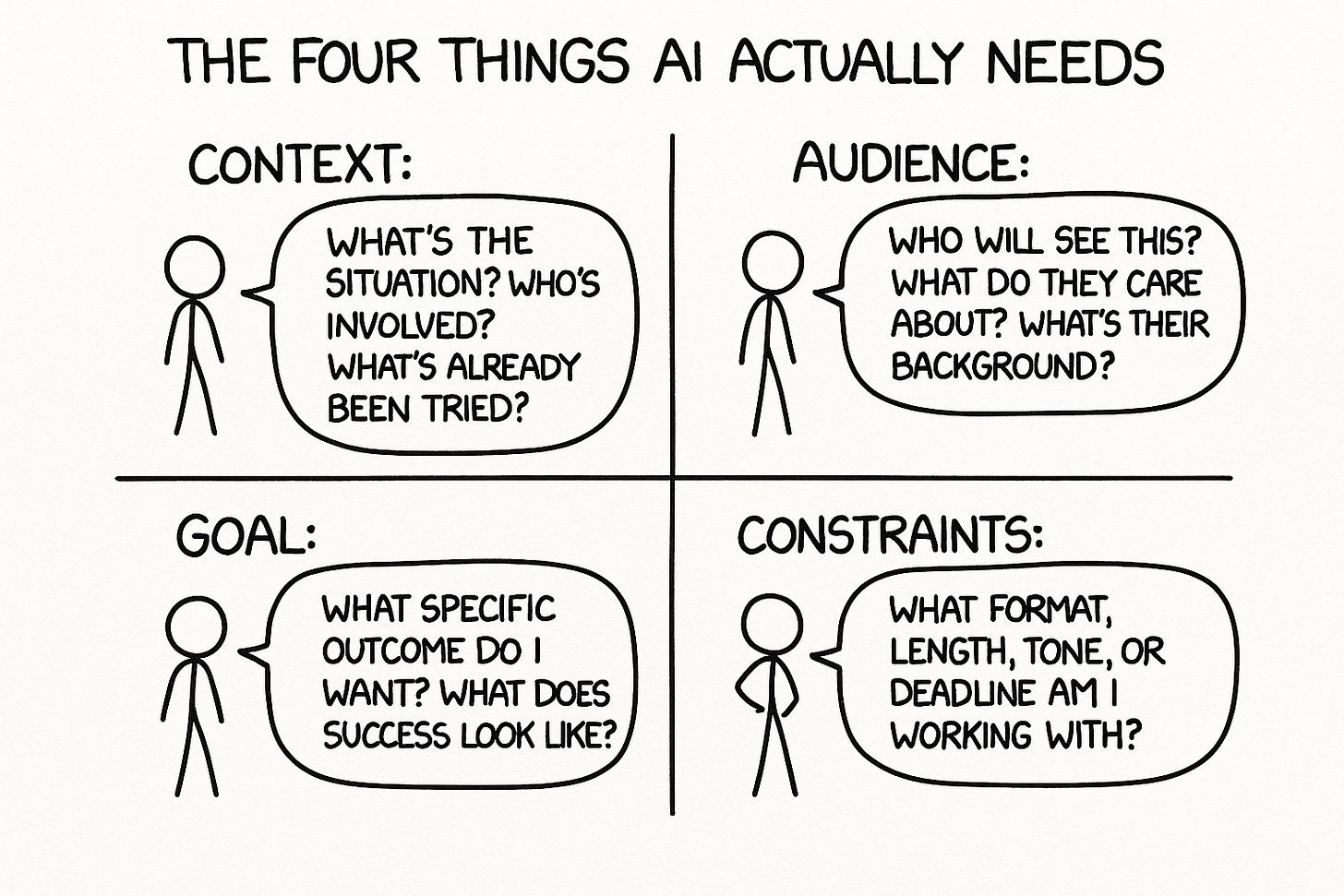Stop Prompt Engineering: Just Talk to AI Like a Human
You don't need a new prompt. You just need to keep talking.
Following up on my previous post about AI tools. There's something else I've been meaning to share that will save you a ton of time and frustration.
You know all those articles about "prompt engineering" and "ultimate prompt guides" flooding the internet? Ignore them. You don't need them.
The Great Prompt Library Myth
People are obsessing over finding the "perfect prompts" like they're magic spells to unlock AI's potential. They're downloading prompt libraries, buying prompt courses, and copying other people's prompts verbatim.
It's nonsense. The best way to get what you want from AI is much simpler:
Just clearly tell it what you want.
That's it. No engineering degree required. No special keywords. No secret syntax.
Why Copying Other People's Prompts Doesn't Work
Here's the thing about all those prompt libraries floating around: they weren't written for YOUR specific situation, YOUR voice, or YOUR needs.
Someone else's "perfect" sales email prompt was created for their product, their audience, and their goals. Their "ultimate blog post prompt" reflects their writing style and content needs, not yours.
When you copy someone else's template, you're getting their context, not yours. And context is everything.
Why Clear Communication Works Better
Think about your most productive conversations with humans. Do they follow rigid templates? Or do they flow from clear needs and shared understanding?
The same applies to AI. When you approach it with clear intention rather than searching for the "perfect prompt," you're already winning.
Your goal isn't to trick the AI into giving you what you want - it's to communicate clearly enough that it can actually help you.
How I Actually Talk to AI (No "Engineering" Required)
Instead of using formulaic templates, I focus on clarity and context.
Instead of: "Write me a blog post about digital marketing"
I say: "I need to explain to small business owners why they shouldn't waste money on Facebook ads until they have their customer journey mapped out. They're typically skeptical of marketing advice and prefer concrete examples over theory."
See the difference? The second approach gives the AI everything it needs to be genuinely helpful:
Who will read this (small business owners)
What I want to convince them of (map customer journey first)
How they think (skeptical, want examples)
The Four Things AI Actually Needs
When I'm asking AI for help, I make sure to include:
Context: What's the situation? Who's involved? What's already been tried?
Audience: Who will see this? What do they care about? What's their background?
Goal: What specific outcome do I want? What does success look like?
Constraints: What format, length, tone, or deadline am I working with?
That's not a rigid template - it's just being thorough about what you actually need.
Treat It Like a Conversation
Good human conversations involve back-and-forth. Same with AI.
Don't treat it as a one-and-done command. Start with your request, then refine: "That's heading in the right direction, but I need it to be more technical. My audience has engineering backgrounds."
AI isn't reading your mind. The more you tell it about your specific situation, the better your results will be.
The Freedom of Just Talking Normally
The beauty of abandoning "prompt templates" is freedom. You're no longer hunting for the perfect incantation. You're simply stating what you want, providing context, and iterating.
This approach not only works better - it's sustainable. You're building a skill that works across all AI tools and will stay valuable as AI evolves.
Most importantly, you're developing your own authentic way of communicating with AI that matches how you naturally think and work.
You Deserve Your Own Solution
Your work, your projects, and your goals are specific to you. Generic prompts give you generic results.
But when you communicate your unique situation clearly, you get results tailored to your actual needs.
The best part? This gets easier with practice. Each conversation teaches you what works for your specific situation. You develop an intuitive sense for how to frame requests to get genuinely helpful responses.
What's truly liberating is realizing that effective AI communication isn't about finding secret codes - it's about the same principles that make human communication work: clarity, context, and conversation.




